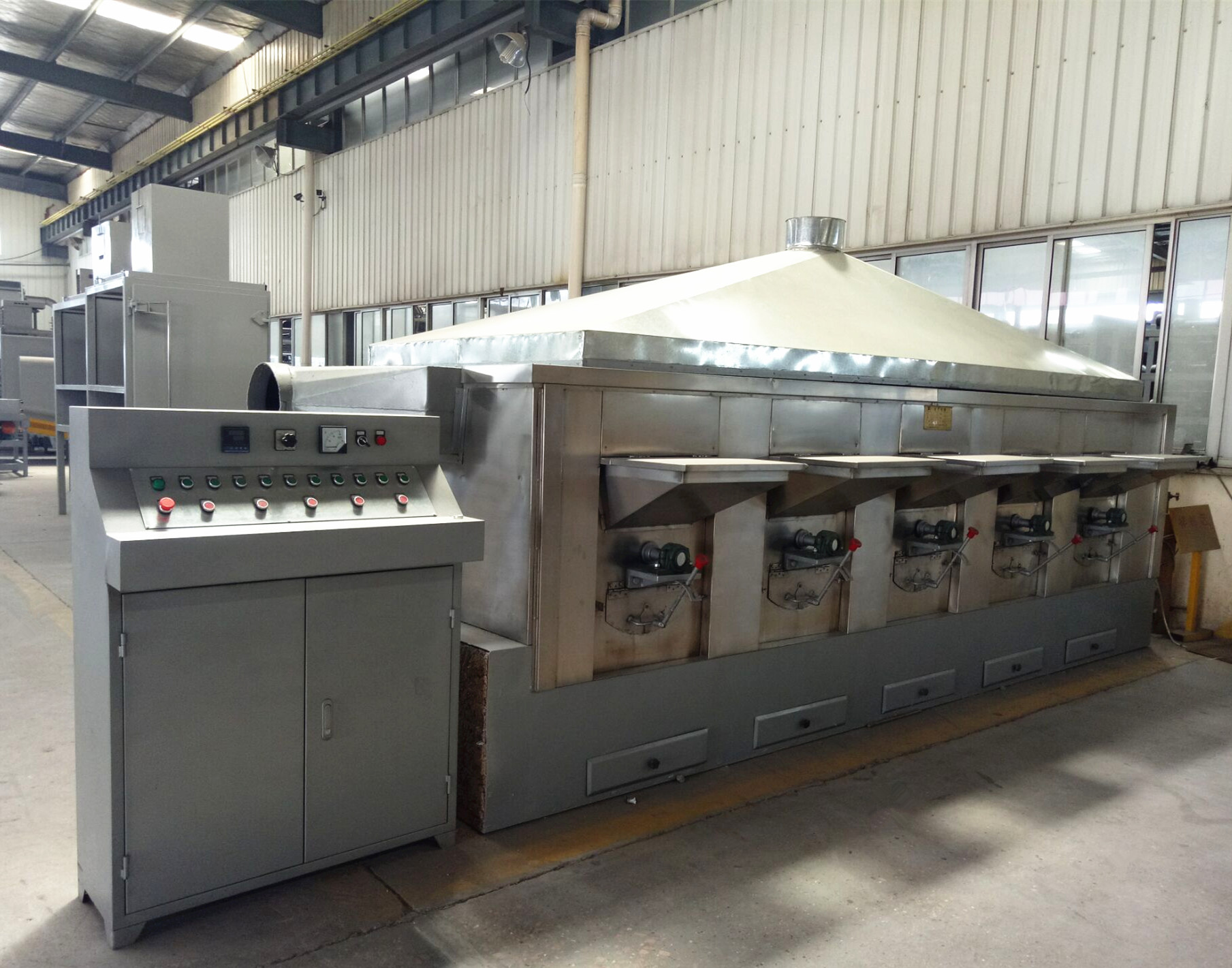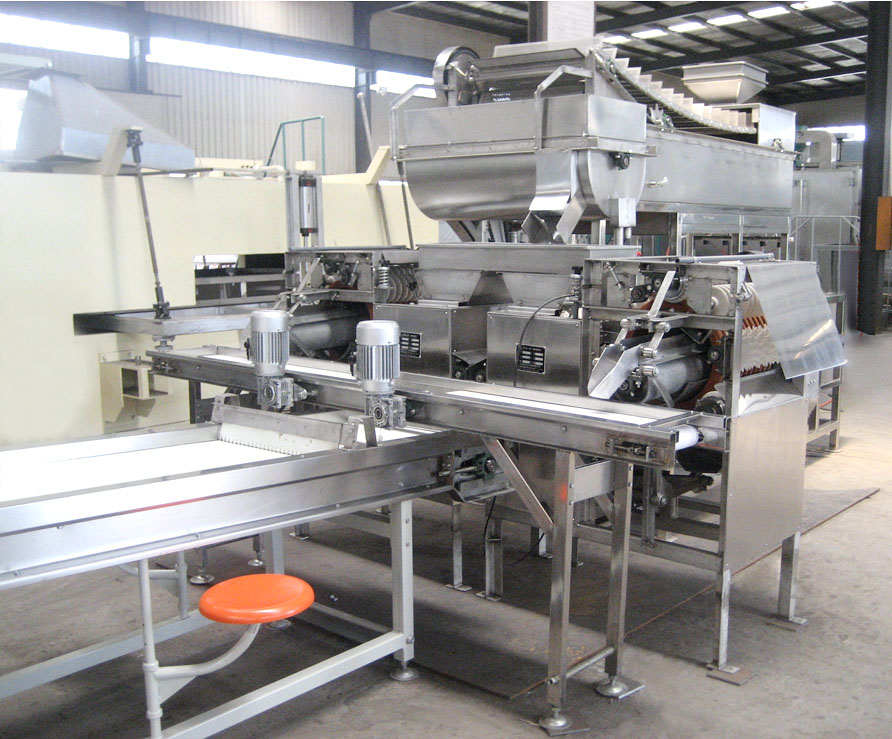Cocoa peanut butter is made of peanut and natural cocoa butter, it adopts the secondary grinding method to make sure the peanut butter has good stability, which not only solves the problem of “oil separation”, but also give special cocoa flavor to peanut butter.
Peanut Butter Production Equipment
Peanut sheller, peanut roasting machine, peanut sieving machine, peanut peeler, batching machine, peanut butter mill, peanut butter machine, peanut butter filling machine.
Peanut Butter Production Process Flow
Peanut—> Peanut Hulling—> Selection and Classification—> Roasting —> Peeling—> Ingredients—> Coarse Grinding—> Fine Grinding—> Filling and Capping
1. Shelling and Selecting, use a peanut sheller to remove the peanut shell, get rid of moldy and corrupt peanut, select qualified peanut kernels, and use a vibrating screen to divide the qualified peanuts into large, medium and small grades for roasting.
2. Roasting and Peeling, roasting the classified peanut kernels in an peanut roasting machine at 150-155℃, pay attention to observe, it is well roasted when the surface of the peanuts becomes a light brownish yellow. When the peanut kernels are cooled down after roasting, use peanut peeling machine to remove the red skin.


3. Ingredients and Coarse grinding, Referencerecipe: peeled peanut kernels 86% (W), sugar powder 7% (W), cocoa butter 4.5% (W), monoglyceride 0.5% (W), refined salt 1.5% (W), monosodium glutamate 0.5% (W), mix them thoroughly in an batching tank, and then use a peanut butter machine to grind the crude peanut butter for the first time.
4. Fine grinding, filling and packing, grind the crude peanut butter with colloid mill. After grinding, use peanut butter filling machine to fill and cap in time to get the finished product of cocoa peanut butter.

The quality of roasted peanut kernels directly affects the flavor and taste of the peanut butter. Therefore you should first divide the peanut kernels into large, medium, and small grade and then roat them separately, so that the large ones are not yet cooked while the small ones are pasty. Secondly, operator should always pay attention to the roasting temperature. If the temperature is too low, it will not roast a strong peanut flavor, and it will waste time and energy. If the temperature is too high, the surface of the peanut kernels will become burnt. The test shows that it is better to control the baking temperature within 150-155℃. Generally, roasting until the surface of the peanut kernel changes from white to yellow, and then turns to a light brownish yellow, and emits a strong roasted peanut aroma without scorching.